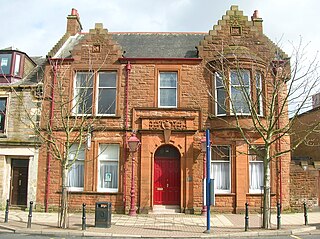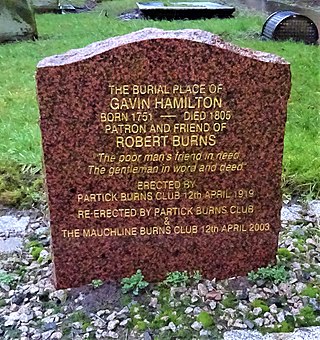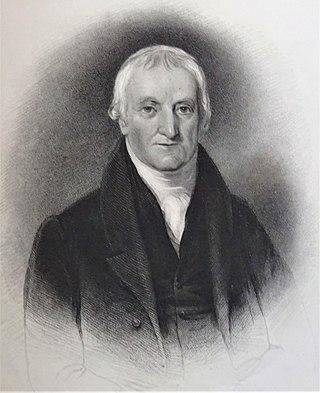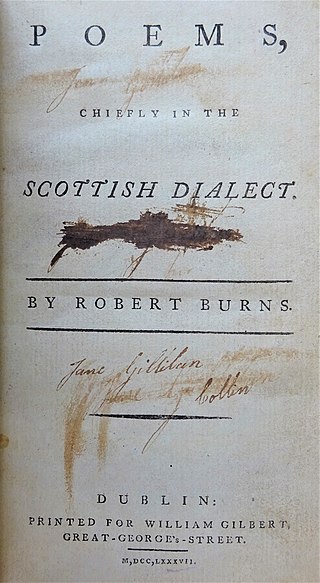
Robert Burns, also known familiarly as Rabbie Burns, was a Scottish poet and lyricist. He is widely regarded as the national poet of Scotland and is celebrated worldwide. He is the best known of the poets who have written in the Scots language, although much of his writing is in a "light Scots dialect" of English, accessible to an audience beyond Scotland. He also wrote in standard English, and in these writings his political or civil commentary is often at its bluntest.

The Irvine Burns Club, based at the Wellwood Burns Centre & Museum, was founded on 2 June 1826 and is one of the world's longest continuously active Burns Clubs. At least five personal friends of Robert Burns were among the group of local gentleman, whose idea it was to form the club. Irvine in North Ayrshire is an old market town and port situated on the west coast of Scotland, approx 14 miles north of Ayr.

The Robert Burns World Federation is a literary society based in Kilmarnock, Ayrshire, Scotland, aimed at educating the public about the life, poetry and works of the poet Robert Burns. It is a Scottish Charity and a company limited by Guarantee. The Federation links existing Burns Clubs and similar groups, giving a unique number to affiliated Clubs, which is then used by them in their promotion and identification. Their ongoing intent is to provide a way for clubs to link together and enjoy the mutual benefit of association, communication and shared mission. It was founded in 1885
Adam Armour (1771–1823) was the younger brother of Jean Armour and therefore the brother-in-law of the poet Robert Burns. In addition, being married to Fanny (Frances) Burnes, he was also related to the poet through his father-in-law 'Poor Uncle Robert', who lived at Stewarton.

Poems, Chiefly in the Scottish Dialect is commonly known as the first Edinburgh Edition and the partial second setting has become known as the Stinking Edition. It is a collection of poetry and songs by Robert Burns, first "Printed for the Author" by William Smellie in Edinburgh and published or "Sold by William Creech" of Edinburgh on the 17 April, an announcement being made in the Edinburgh Advertiser on that date, although the date 21 April 1786 is given by a few authors. The Kilmarnock Edition made Robert Burns Caledonia's Bard whilst the 'Edinburgh Edition' elevated him into a position amongst the world's greatest poets.

Poems is a collection of poetry and songs by David Sillar, a close friend of the poet Robert Burns who had been encouraged to go into print by the success of Poems, Chiefly in the Scottish Dialect. Poems was printed by John Wilson of Kilmarnock in 1789. Sillar's interest in poetry predated his friendship with Burns, but was one of several reasons for it.

The Glenriddell Manuscripts is an extensive collection written in holograph by Robert Burns and an amanuensis of his letters, poems and a few songs in two volumes produced for his then friend Captain Robert Riddell, Laird of what is now Friars Carse in the Nith Valley, Dumfries and Galloway. The two volumes of the manuscript were handsomely bound in calf leather. The first volume of poems and songs was completed by April 1791 and was presented to Robert Riddell, however their friendship ceased due to the unfortunate 'The Rape of the Sabine Women' incident and Robert Riddell died shortly after before any reconciliation could take place. The first volume is partly in Burns's hand with one main amanuensis contributing much of the text in a far neater hand than the author himself and a possible third person contributing to the text. The second volume is entirely in Burns's hand.

Poems, Chiefly in the Scottish Dialect was issued during the poet's lifetime In Two Volumes. The Second Edition Considerably Enlarged. It is a collection of poetry and songs by the poet Robert Burns, printed for T. Cadell, London, and W. Creech, Edinburgh. M,DCC,XCIII The date of publication for this edition was 16 February 1793 as advertised in the Edinburgh Courant. The successful demand for the 1787 Edinburgh Edition seems to have encouraged Creech to publish this new edition as the 1787 volume had been sold out since around 1791.

Robert Burns's Commonplace Book 1783–1785 is the first of three commonplace books that were produced by the poet. The contents cover drafts of songs and poems, observations, ideas, epitaphs, etc.

Robert Aiken was one of Robert Burns's closest friends and greatest admirers. He was born in 1739 in Ayr, Scotland. His father John Aiken, was a sea captain who owned his own ships and his mother was Sarah Dalrymple, distantly related to the Dalrymples of Stair. He became a writer or lawyer in Ayr and was referred to by Burns as "Orator Bob" in his poem "The Kirk's Alarm". Robert was famous for the power, beauty and quality of his oratory as his nickname infers.

'Robert Burns's Interleaved Scots Musical Museum' or the 'Interleaved Glenriddell Manuscript' is a set of four octavo volumes of James Johnson's The Scots Musical Museum in which Robert Burns provided additional material to the original publication on interleaved sheets and which he eventually gifted to Captain Robert Riddell (1755–94) of Friars Carse, Dumfries and Galloway, Scotland.

Gavin Hamilton was one of Robert Burns's closest friends and a patron. The first 'Kilmarnock Edition' of his poems were dedicated to Gavin Hamilton.

John Richmond (1765–1846) was one of Robert Burns's closest friends and confidants. He was born in Sorn parish at Montgarswood, Ayrshire, Scotland. His father, Henry Richmond, was a merchant in Mauchline and owned Montgarswood Farm that lies near Sorn. This farm passed to James, John's brother, having once been farmed by William Fisher, Burns's Holy Willie.

John Ballantine (1743–1812), was a Scottish merchant and banker and one of the greatest friends, admirers and closest confidants of Robert Burns. Significantly Ballantine gave the poet advice on the selection of poems for his First Kilmarnock Edition as well as being asked for his opinion on the bard's poems.

Robert Ainslie (1766–1838) was a Scottish lawyer, and one of Robert Burns's long-term friends from his Edinburgh days. He was probably the closest confidant of Burns, whom he met first at a Masonic or Crochallan Fencibles event. Ainslie accompanied the poet on the first part of his Border Tour. Robert's father, also Robert, was a lawyer a bailie at Duns and a land-steward on Lord Douglas's Berwickshire estates. Robert married Jean Cunningham on 22 December 1798.

John Syme was a Scottish lawyer and one of the poet Robert Burns's closest friends during his time in Dumfries. In the summers of 1793 and 1794 he joined Burns on his two short tours of Galloway. Syme and Alexander Cunningham were amongst the most active of the friends and admirers of Burns's works who raised funds for the poet's family and for his mausoleum with the assistance of others such as James Currie. Together with Dr Willam Maxwell he arranged Burns's funeral.

Robert Graham of Fintry was the 12th Laird of Fintry near Dundee and was one of Robert Burns's most supportive patrons, correspondent and loyal associate. Appointed a Commissioner of the Scottish Board of Excise he assisted Burns with his Excise career and during his 'loyalty' difficulties. He was a great admirer of his poetry and Burns wrote several epistles to him. Burns referred to him as "Friend of my Life - True Patron of my Rhymes."

Edward Whigham (1750–1823) was the landlord of a coaching inn, a bailie, Provost of Sanquhar, bibliophile and one of Robert Burns's close friends during his Nithsdale and Dumfries days. Edward married Jane Osborne who died on 6 October 1846.

Poems, Chiefly in the Scottish Dialect was the second "pirated" issue of Robert Burns's work, being published in Ireland at Belfast without permission from or payment to the author or publisher. It is a so-called Stinking Edition, carrying the error Stinking for the Scots word Skinking (watery) in the poem "To a Haggis" because the type setters copied from a 1787 Stinking Edition of Poems, Chiefly in the Scottish Dialect. It has been shown to be from the same print setting as the Belfast Edition but with a different title page.

Poems, Chiefly in the Scottish Dialect was a 'pirated' edition of Robert Burns's work, being published in Ireland without permission from or payment to the author or publisher. It is a so-called 'Stinking Edition', carrying the error 'Stinking' for the Scots word 'Skinking' (watery) in the poem "To a Haggis" because the type setters copied from a 1787 'Stinking Edition' of Poems, Chiefly in the Scottish Dialect .

























